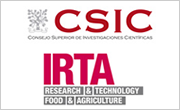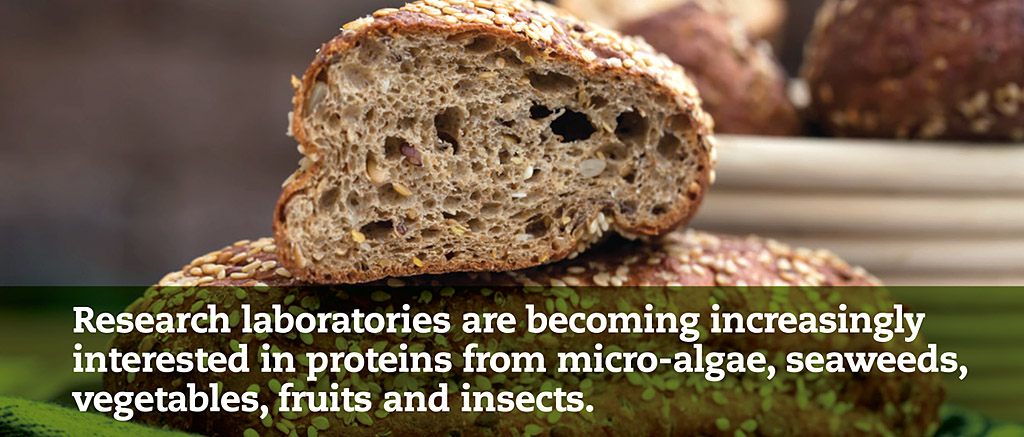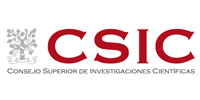 By Cristina M. Rosell (below left) is a Full Research Professor in the Institute of Agrochemistry and Food Technology IATA-CSIC) and Dr Fatma Boukid (below right) is a Project Manager in the Institute of Agrifood Research and Technology IRTA-Monells, Girona, Spain
By Cristina M. Rosell (below left) is a Full Research Professor in the Institute of Agrochemistry and Food Technology IATA-CSIC) and Dr Fatma Boukid (below right) is a Project Manager in the Institute of Agrifood Research and Technology IRTA-Monells, Girona, Spain
The protein-rich diet is booming as a ‘better for you’ lifestyle. Alternative proteins are a disruptive driver for protein-rich food formulations and have found an excellent niche in baked goods and snacks. There could be many reasons for this interest; but does it represent a market trend or is it a response to consumer demand?
 A single main trigger is unlikely to be responsible. Manufacturers continue to seek alternative edible sources to boost product innovation and to respond to new consumption niches. Vegans and vegetarians have health, ethical and environmental motives for excluding animal proteins from their diet and consume plantbased proteins, whereas the flexitarian lifestyle is based on the reduction of proteins from animal in favour of those from non-animal sources, for health reasons. Athletes are among those who consume hyper- protein foods, so baked goods and snacks are regarded by them as a good way of ingesting adequate protein intake.
A single main trigger is unlikely to be responsible. Manufacturers continue to seek alternative edible sources to boost product innovation and to respond to new consumption niches. Vegans and vegetarians have health, ethical and environmental motives for excluding animal proteins from their diet and consume plantbased proteins, whereas the flexitarian lifestyle is based on the reduction of proteins from animal in favour of those from non-animal sources, for health reasons. Athletes are among those who consume hyper- protein foods, so baked goods and snacks are regarded by them as a good way of ingesting adequate protein intake.
Given that it is predicted that meat demand will increase by nearly 1.5% per annum from 300 to 455 million tons over the forecast 2020-2050 as a result of an increasing world population, it is anticipated that the identification of alternative sources of protein will be essential rather than optional if future demand is to be met. Alternative proteins such as those found in pulses or cereals are healthier and more sustainable compared to those from animal sources. In terms of healthiness and wellbeing, the source matters.
Where animal proteins have complete and balanced amino acid-compositions compared with plant proteins, blending cereals and pulses can also provide a balanced composition (Boukid et al., 2019). Recent evidence has also revealed that animal proteins can be associated with health & safety issues. In addition to the source of a protein, its subsequent processing, through several steps of isolation and extraction, can modify its structure and functionalities as well as its nutritional profile. Caution should be taken, therefore, where general statements are made about the healthiness of a protein.

THE MAIN ALTERNATIVE PROTEIN SOURCES
Soy protein occupies the largest share of the market followed by wheat and pea proteins respectively. Increasing interest in proteins that derive from lupin, chickpea and beans are also valuable for their nutritional, functional and health benefits. Proteins deriving from cereals such as rice and corn are trending upwards especially in the gluten- free markets as is potato protein.
Research laboratories are becoming increasingly interested in proteins from micro-algae, seaweeds, vegetables, fruits and insects, which are expected to take the market by storm in the near future. For the time being, though, there are no commercially available protein isolates from algae, but only dried biomass because their extraction and purification are still encountering serious challenges with cell disruption.
Similarly, despite the great demand for high-protein (up to 92%) microbial protein alternatives, the commercial exploitation of bacteria has up until now focused mainly on animal feed, rather than on human consumption.
In bakery, the selection of the source of proteins depends on whether or not the product contains gluten. In gluten- containing products, vital gluten is the most used especially in weak wheat flour for improving its rheological performance. Other proteins can be used to enhance the amino acid profile such as soy, pea, or potato proteins. In gluten- free products, soy, rice and potato proteins as well as zein are used most often for their functional and nutritional features.
PROCESSING
The key steps in the extraction of protein are solubilisation under alkaline or acidic conditions, isoelectric precipitation and drying. Both pre and post- processing treatments, including fermentation (by bacteria, yeast and/or fungi), enzymes, chemical and thermal processing, are used to reduce protein-flavour binding affinities, changing sensory perception separately from their functionality. These processes can affect protein structure by inducing changes in amino acid sequences in their primary structure prior to the formation of folding polypeptide chains and leading quaternary structures. Furthermore, changing conditions, applied for isolation and extraction, can modify proteins conformations and native state stability. These modifications can be a valuable pathway to modulate functionalities promoting specific ones like foaming, emulsifying, filming, structuring and gelling capacities. However, those modifications in functionality could also have a negative impact on their physiological and functional properties.
The search for new protein sources is gathering pace and often linked to sustainability and waste recovery, but with the caveat that protein extraction and isolation require complex processes that can rarely be categorised as sustainable and environmentally friendly.
APPLICATION OF ALTERNATIVE PROTEINS IN FOOD AND BEVERAGES
 Incorporating alternative proteins into bakery products, pasta, snacks, meat analogues, beverages and dairy products has become common practice in the development of innovative foods. Despite that great interest, the inclusion of proteins is still challenging for the food industry, mainly because of the impact on functional and technological properties. These proteins can be added to contribute to function, nutrition or both.
Incorporating alternative proteins into bakery products, pasta, snacks, meat analogues, beverages and dairy products has become common practice in the development of innovative foods. Despite that great interest, the inclusion of proteins is still challenging for the food industry, mainly because of the impact on functional and technological properties. These proteins can be added to contribute to function, nutrition or both.
Proteins from soy, wheat and peas are of particular interest as substitutes for animal protein in animal-free formulations due to their film-forming and texturing properties enabling the formation of the fibrous structure. Likewise, their inclusion in gluten-free breads enhances the rheological properties of the dough and quality of the bread as well as contributing to its nutritional quality and digestibility (Marco & Rosell, 2008) soybean, egg albumen and whey proteins. In wheat bread, gluten improves bread properties, while non-gluten proteins improve protein quantity and quality of the bread product. The inclusion of protein also enhances the nutritional properties of pasta and biscuits without compromising their traditional sensory features.
In addition to their use in food products, non-animal proteins have also found a place in innovative beverages including sports drinks, shakes, smoothies and so on.
Textured soy proteins or pea proteins provide protein-rich beverages that could be greatly appreciated, not only by athletes, but also elderly persons in need of protein supplements. Despite the nutritional benefits of dairy-free beverages made with soy and pea proteins, their enjoyment can be marred by a characteristically beany flavour. To overcome such issues, innovations in processing and formulations are key to shaping the future of the protein market. Furthermore, the consequences of changing the protein profiles of foods plus the global protein intake are still unknown, therefore, more investigation is required to fill in this gap.
HEALTH ASPECTS
Protein intake is required for the proper functioning of the human metabolism and as a source of essential amino acids. The World Health Organisation, (WHO), the UN Food and Agriculture Organisation, (FAO) and United Nations University (UNU) set out the various requirements for essential amino acids dependent on consumer age range. Protein hydrolysates are an important source of bioactive peptides with health-promoting properties such as antioxidative, antimicrobial, antihypertensive, anti-cancer and immunomodulatory effects as well as blood pressure regulation and blood serum cholesterol control. Nevertheless, compositional information related to proteomics and metabolomics of products enriched with proteins is still missing. Considering the further impact of proteins in the human metabolism, it is deemed essential to fully exploit protein functionality and to guarantee product safety.
Since all alternative proteins have still not been identified or exploited, taking full advantage of their use requires an understanding of their techno-functionality and behavioural properties within food matrices, in order to establish their potential use and possibilities. In addition to processing and functionality, the potential impact of specific amino acids and peptides on human health requires further research.
ABOUT THE AUTHORS
Cristina M. Rosell is a Full Research Professor in the Institute of Agrochemistry and Food Technology (IATA-CSIC). She is an active researcher in food science and technology in relation to processing, quality and nutrition. She is leader of numerous national and international research projects, among them the “Leading Innovation in Cereals” a flagship project in Cereals and Cereal Based Products. She has more than two hundred publications and book chapters on the topic of cereals. She is the author and editor of several books and received various prizes for her achievements in cereal science.
Fatma Boukid is a project manager at Institute of Agrifood Research and Technology IRTA-Monells. Her search activity is mainly focused on plant proteins deriving from conventional (cereals and pulses) and innovative (microalgae) sources. She has worked on wheat allergy, designing fat-reduced and sugar-reduced bakery products as well as functional foods based on cereals and pulses and food digestibility. She is currently involved in protein alternatives, mainly microalgae, under the umbrella of a European project 'ProFuture' (Microalgae protein-rich ingredients for the food and feed of the future_H2020 Ref. 862980).
REFERENCES
Boukid, Fatma, Zannini, E., Carini, E., & Vittadini, E. (2019). 'Pulses for bread fortification: A necessity or a choice?' Trends in Food Science and Technology. Elsevier Ltd. https://doi.org/10.1016/j.tifs.2019.04.007
Marco, C., & Rosell, C. M. (2008). 'Breadmaking performance of protein enriched, gluten-free breads.' European Food Research and Technology, 227(4), 1205–1213. https://doi.org/10.1007/s00217-008-0838-6
For more information

Prof. Cristina M. Rosell, Food Science Department,
Institute of Agrochemistry and Food Technology (IATA-CSIC),
Valencia,
Spain
Email: crosell@iata.csic.es

Dr Fatma Boukid
Institute of Agrifood Research and Technology IRTA-Monells,
Girona,
Spain
Email: fatma.boukid@irta.cat